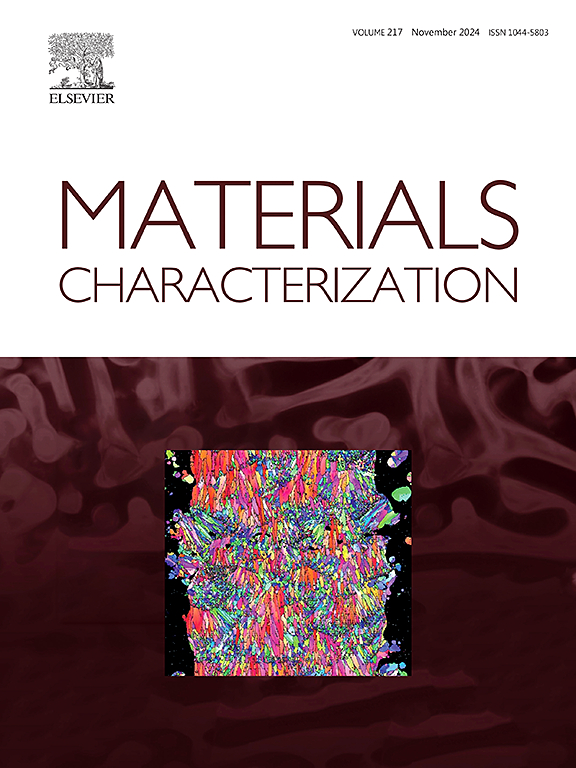Coupling effects of interlayer holes and α-Ti variants on mechanical properties and anisotropy of additively manufactured titanium alloy
IF 4.8
2区 材料科学
Q1 MATERIALS SCIENCE, CHARACTERIZATION & TESTING
引用次数: 0
Abstract
The influence mechanism of additive manufacturing characteristic pores on mechanical properties of titanium alloys has not yet been well clarified. This study systematically investigates the influence of interlayer flat holes (IFHs) on anisotropic mechanical behaviors of a high-temperature titanium alloy fabricated via electron beam powder bed fusion (EB-PBF). IFHs have a more pronounced effect on strength and particularly ductility than spherical pores. Samples with IFHs exhibit an elongation-to-fracture (EI) only one-third that of highly dense samples in the build direction, with ultimate tensile strength (UTS) reduced by 100 MPa. IFHs also induce significant mechanical anisotropy: EI in the transverse direction reaches 8.0 %, double the value in the build direction, with UTS being 130 MPa higher. For the first time, mechanical degradation and anisotropy are attributed to a coupling effect of IFHs-induced reduction in effective bearing area, strong anisotropic stress fields, and the diversification of α-Ti variants. Under vertical loading, the anisotropic stress fields activate non-Schmid effects on slipping, promoting strain localization near IFHs through basal, prismatic, and pyramidal slips in α-variants. Consequently, an opening mode of IFHs proceeds since crack initiation at the IFHs' ends, causing premature fracture. These findings provide new insights into the role of pore defects in the anisotropic mechanical behaviors of EB-PBF-built titanium alloys.

求助全文
约1分钟内获得全文
求助全文
来源期刊

Materials Characterization
工程技术-材料科学:表征与测试
CiteScore
7.60
自引率
8.50%
发文量
746
审稿时长
36 days
期刊介绍:
Materials Characterization features original articles and state-of-the-art reviews on theoretical and practical aspects of the structure and behaviour of materials.
The Journal focuses on all characterization techniques, including all forms of microscopy (light, electron, acoustic, etc.,) and analysis (especially microanalysis and surface analytical techniques). Developments in both this wide range of techniques and their application to the quantification of the microstructure of materials are essential facets of the Journal.
The Journal provides the Materials Scientist/Engineer with up-to-date information on many types of materials with an underlying theme of explaining the behavior of materials using novel approaches. Materials covered by the journal include:
Metals & Alloys
Ceramics
Nanomaterials
Biomedical materials
Optical materials
Composites
Natural Materials.
 求助内容:
求助内容: 应助结果提醒方式:
应助结果提醒方式:


